HTC 10 vs Apple iPhone 6s
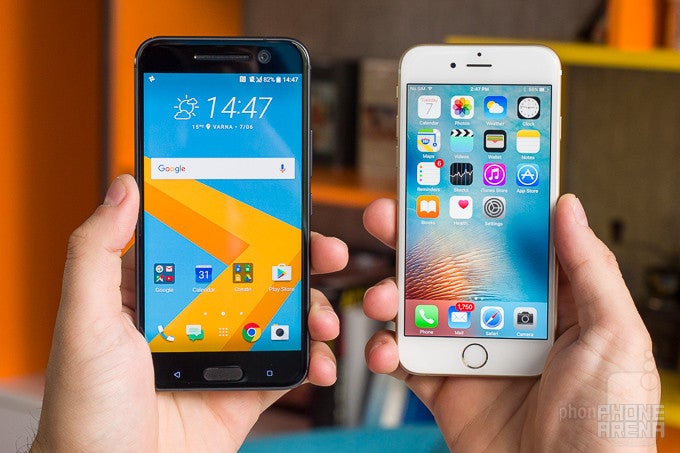
Introduction
HTC took to heart all the criticism that its last few flagships endured, mainly for their camera performance, and came back with the HTC 10 this year that covers all bases. It is still housed in the premium metal chassis we know and like, but the camera has been given a special emphasis, and the software – a thoughtful overhaul.
That is why we are pitting it now against Apple's iPhone 6s, which also sports a solid metal housing and stellar camera, but is more compact thanks to the smaller screen size. Which one should you grab? Let's examine the details...
Design
The somewhat repetitive design of the HTC 10 is a direct match for the thin iPhone 6s that is housed in a chassis similar to its predecessor.
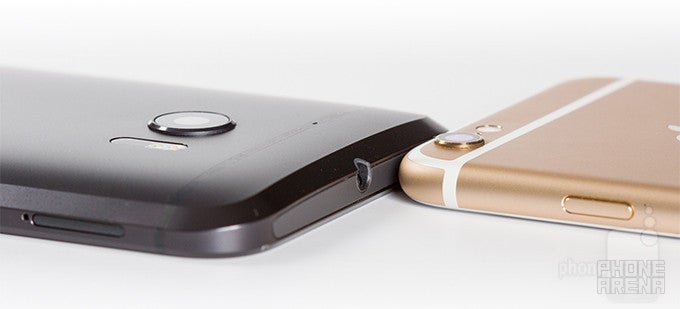
While metal may be becoming the new plastic, as even midrange phones from some makers come in aluminum or magnesium alloys these days, HTC and Apple have been making metal phones before it was the norm. Therefore, they didn't need to alter their design language to remain in the “premium” chassis segment. Granted, even the new chamfered edges of the aluminum rear on the HTC 10 can't help it become more stylish compared to the airy chassis of the iPhone 6s, simply because it is quite a bit larger and thicker.
Both phones sport touch finger scanners embedded in the home key underneath their displays, which are a breeze to operate. That same home key acts rather differently, though – on the iPhone 6s it is a physical button you can click down, while the HTC 10 uses a capacitive touch home, flanked by similar back and menu keys. The lock buttons and volume rockers on the phones' sides are a more standard fare, easy to feel and press, with responsive tactile feedback. HTC even added a toothed imprint on the power key for easier find when you search to press it without looking, which is a nice touch from practical standpoint.
Display
Brighter panel in the sun, more credible colors are on offer with the iPhone 6s
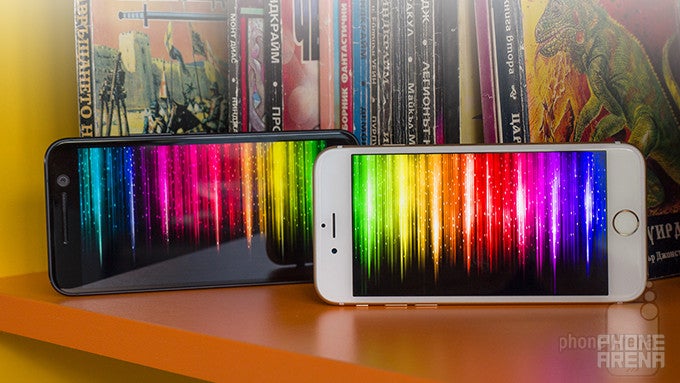
Both the HTC 10 and the iPhone 6s come with latest generation LCD displays, which, however, differ both in size and resolution. HTC offers a 5.2” 1440 x 2560 pixels Quad HD panel, while the iPhone 6s counts on a 4.7” display with 750 x 1334 pixels. Still, pixel density is not an issue with both, as the iPhone has a smaller diagonal, and letters as well as icon edges look smooth and crisp on both from a normal viewing distance.
When it comes to screen quality, the iPhone 6s has an almost spot-on color temperature and saturation, referenced to the standard sRGB gamut, while HTC 10 leans a bit towards the cold side of the spectrum, with a tad unnatural hues. Not quite a dealbreaker, but still.
The iPhone's brightness/screen reflection combo makes it the preferable choice for outdoor viewing. Moreover, the 6s offers a 3D Touch display that can distinguish between a light tap and a harder press, and react accordingly in both stock apps, as well as compatible third-party ones.
Interface
HTC brings common Sense in the ragtag Android overlay business, moving it closer to the clean iOS experience.
The newest Sense 8 interface on the HTC 10 is wrapped around Android Marshmallow, but doesn't change it all that much in terms of looks and functionality, as HTC has taken a more minimalistic approach than what your usual Android overlay offers.
Besides flat and colorful Material Design styling, à la Google Nexus, HTC cleaned up the annoying duplicate essential apps that most other manufactures still have in their overlays. You don't get two galleries, to say the least. It still left plenty of customization options, though, like a rich Themes app, and the BlinkFeed homescreen, which integrates news, social media feeds, and contextual awareness, while running smooth as silk. Another interesting new take is the Freestyle layout that allows you to customize the home screen theme by assigning app shortcuts to different stickers, as well as hide app labels altogether and create a sleek theme with shortcuts hidden in plain sight.
Apple, too, tends to strive for sense and simplicity when designing its products, and that applies to the iPhone UI experience as well. The iOS 9.x edition that is currently running on the iPhone 6s is clean, streamlined, and easy to get the hang of. Besides, it serves as a gateway to a vast, quality-driven library of games and applications. The 3D Touch functionality of the screen adds a fresh new aspect of app interaction, too.
Processor and memory
The processors ticking inside the HTC 10 and the iPhone 6s are rather different in terms of architecture and workload they deal with, so direct comparison would make no sense. Suffice it to say that both chipsets – the Snapdragon 820 in the HTC 10, and the Apple A9 – are very powerful and efficient, while neither of the two phones would have troubles running any of the latest apps and games.
With 4GB of RAM, the HTC 10 should excel when it comes to multitasking in theory, and indeed you can line up tens of apps open in memory for whenever you might need them back quickly. The sheer RAM amount is not everything, though, as RAM management is at least as important, and the iPhone 6s delivers on par with the HTC 10 in that respect, despite having less RAM to work with.
There are 32 or 64 GB of storage inside the HTC phone, plus support for a microSD card of up to 200GB. The HTC 10 does support adoptable storage, so the phone will display the internal and added memory as a common entry. The iPhone 6s does not support expandable storage, as it comes with 16, 64, or 128 gigs on board, for an extra price tag.
Internet and connectivity
HTC went with Android's default Chrome browser, and we can't blame it, as Google is constantly working to improve Chrome, plus having two browsers to choose from would go against HTC's new simplifying philosophy.
As for connectivity – well, the handsets are loaded with network compatibility and support for most Wi-Fi, Bluetooh, GPS or NFC wireless radio standards under the sun. Of note here is that HTC's phone is the first Android to support Apple's AirPlay streaming technology integrated on the system level, instead of via a third party app. The HTC 10 does have LTE Cat. 9, though, giving it up to 450 Mbps download speeds, but still the number of LTE bands it covers is much less than the record count on the iPhone 6s.
HTC equipped its flagship with the modern USB Type-C reversible connector, so don't forget to always carry the cable with you when traveling, as you can't charge it with a regular microUSB one. The same goes for Apple, which uses a proprietary Lightning cable.
Camera
Two excellent 12 MP shooters strive for the top – the iPhone 6s takes the exposure and noise rounds, leaving color presentation and video sound to the HTC 10.
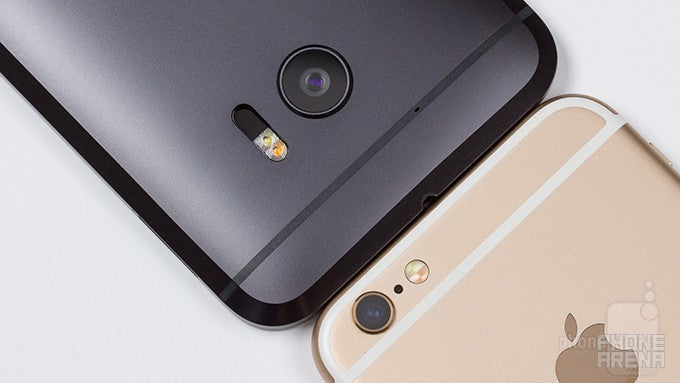
HTC is going with a 1/2.3”, 12-megapixel sensor with large, 1.55μm pixels and wide, f/1.8 lens. Combined with optical stabilization and laser AF, these parameters suggest great light sensitivity for when you're shooting in the dark. Up front, we're looking at an equally compelling, 5-megapixel selfie camera, also with optical stabilization—a first with front-facing snappers, and a boon for club photos.
You can launch the camera by simply swiping downwards twice—even when the phone is asleep—or by dragging the camera app icon into the middle of the lockscreen. As for the interface, it's more minimalist than ever before – save for the dedicated Pro mode, which gives you manual control over variables such as ISO and shutter speed, it's a really clean execution overall.
The iPhone 6s also has a 12-megapixel shooter, but with a slightly smaller sensor, f/2.2 lens, and no optical image stabilization. The clean, unobtrusive interface also resembles what HTC tried to achieve, but there is no manual mode. The staples, like HDR shots or Panorama, are all here, though.
When it comes to quality, the iPhone tends to deliver slightly warmer colors than needed. The HTC also does go to the warm side at times, but not to such an extent. The iPhone often exposes the photos a tad better, with a more balanced and defined approach, plus it allows much less noise in the frame. As far as details go, both phones capture plenty of them, with no definite winner in the area.
In low-light scenarios, the HTC 10's photos exhibit copious amounts of noise, while brighter light sources like lamps or headlights appear a bit blown up. The iPhone goes for a softer, a tad less defined, but much cleaner-looking image with mostly accurate color presentation at dusk or in night shots.
In terms of video, both phones can record 4K footage and slow motion one, the works. The handsets manage to capture excellent clips in almost all situations, with a bit too warm colors from the HTC phone, and a tad darker exposure than needed. The HTC 10 also loses focus for a brief second sometimes, and skips a few frames while panning around. It does record much better audio, though – it records stereo sound by default, and you can even do hi-res sound recording in the lossless FLAC format.
Multimedia
HTC offers the stock Google Photos gallery, which has a bunch of editing features, as well as cloud storage with auto-sync. That same syncing connection sometimes makes the gallery take forever to load if you are on a slower connection, if you have turned it off. Apple's iPhone offers a variety of top-notch editing options, both for pictures and video, which work like a charm.
When it comes to video playback, HTC makes do with the basic Android player, yet it adds the editing powers of Zoe video, which can make a highlight reel of your footage, complete with vintage effects, trimming, and so on.
In audio playback software, it's Apple with the upper hand, as its Music streamer is seamlessly integrated within the iOS interface. As for audio quality – HTC has dropped the front-facing stereo speakers, but instead, we're given dedicated “woofer” and tweeter. The 10's speakers sound pretty good, but not quite as good or clean as that of the iPhone 6s.
Call quality
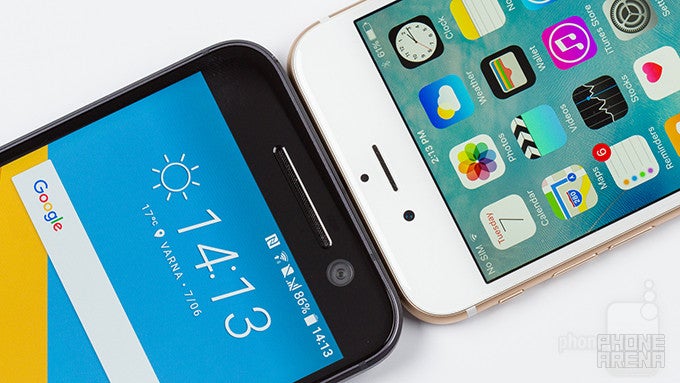
The HTC 10 call quality is nothing to shout from the rooftops about, but it does the conversational job. The earpiece in particular proved inferior than the microphone, with voices being accompanied by occasional crackling and static. The mic, on the other hand, while relaying cleaner sound, leaves something to be desired in terms of strength pick-up.
The iPhone, on the other hand, has never been known to be the best of the best when it comes to call quality, but for the most part, it does well in handling conversations. The iPhone 6s delivers an acceptable performance through its earpiece, which happens to deliver reasonably loud tones. Voices come in a relatively natural and dynamic way, so we don't have complaints in this regard. The microphone does a similarly good job at transferring our voice to our callers, with a mostly clean and defined sound quality.
Battery

The HTC 10 does comes with a Qualcomm Quick Charge 3.0-compliant, 2.5A charger, which gets it 100 minutes of charge to full – hardly an outstanding achievement, but not too shabby either. For comparison, the iPhone 6s managed 8 hours and 15 minutes of screen-on with its 1715 mAh pack, though it would take you 150 minutes to charge it fully.
Conclusion
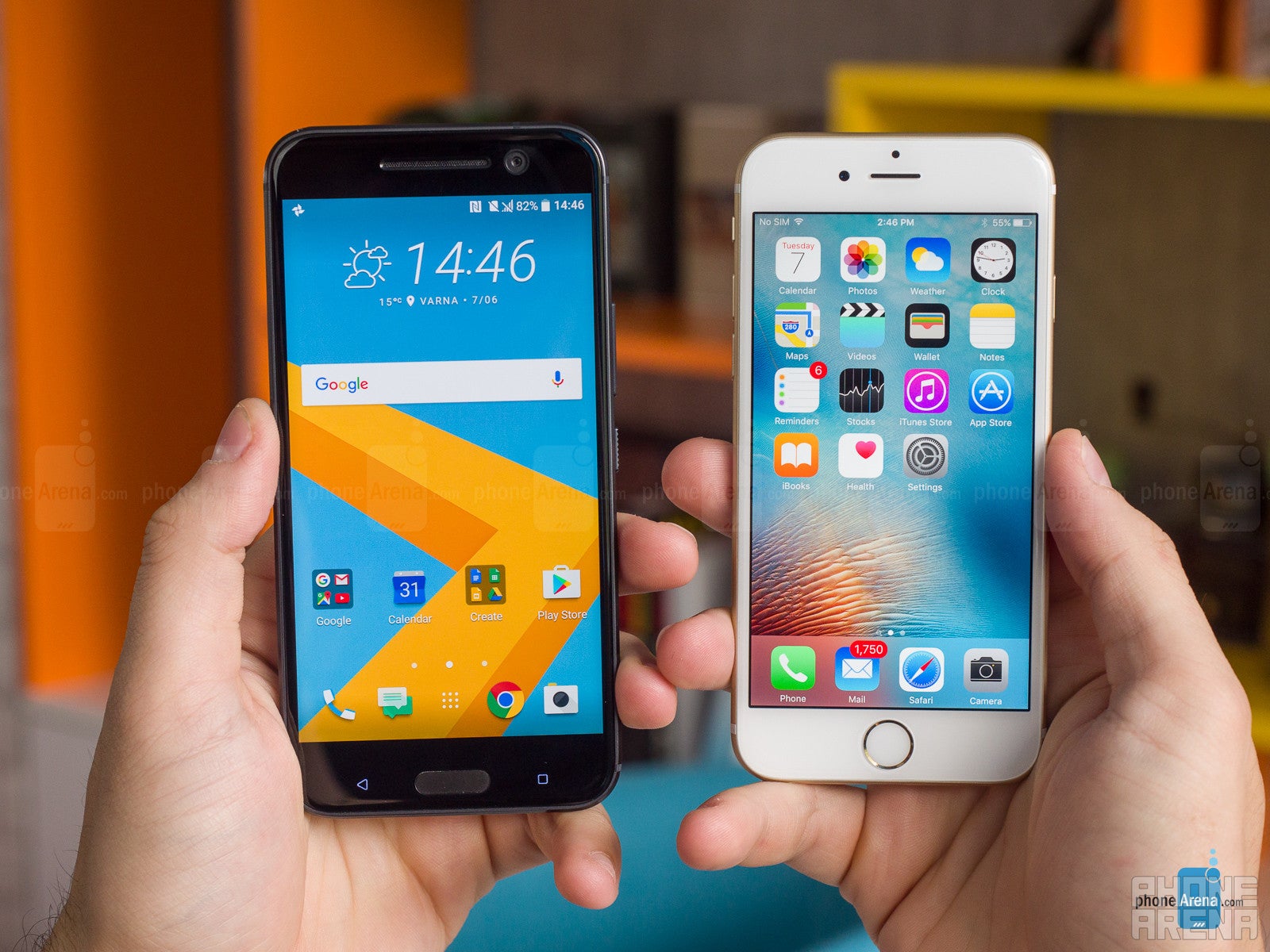
Against the iPhone 6s it stands up taller and thicker, though – literally – and its camera abilities leave a bit to be desired in comparison. Still, the HTC 10 doesn't lag that much behind the iPhone 6s, so if you'd like to be part of the Android camp, the 10 is a perfectly fine choice. Meanwhile, the iPhone 6s continues to be the preferred choice for a more user-friendly and refined overall experience.
HTC 10
Pros
- Clean Android overlay
- Enhanced audio recording
Apple iPhone 6s
Pros
- Great all-around camera
- Rich and quality app ecosystem
- Thin and light chassis

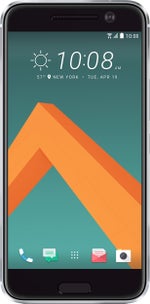
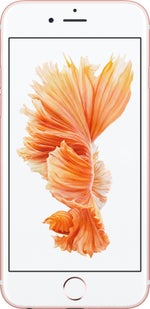


























Things that are NOT allowed: